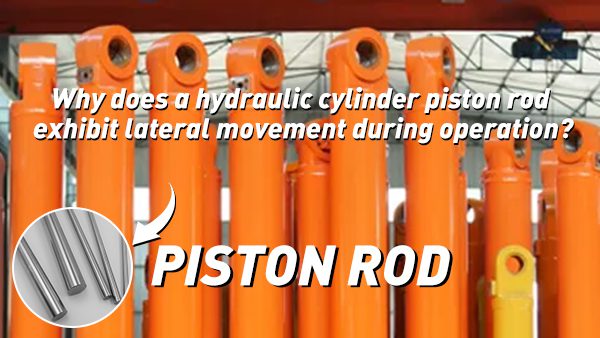Why Does a Hydraulic Cylinder Piston Rod Rotate While Working?
Hydraulic systems are essential in many industries, driving machinery with precision and power. A common yet puzzling issue that often arises is the rotation of the hydraulic cylinder piston rod during operation. This seemingly minor movement can lead to significant consequences if not addressed properly. So, why does this happen, and what can be done about it? Let’s dive into the mechanics and mysteries behind this phenomenon.
Understanding Hydraulic Cylinders
Basic Components of a Hydraulic Cylinder
At the heart of any hydraulic system lies the hydraulic cylinder, a mechanical actuator that provides unidirectional force through a unidirectional stroke. It consists of several key components: a cylinder barrel, a piston and piston rod, seals, and mounting attachments. Each part plays a vital role in ensuring smooth and efficient operation.
Functions of a Hydraulic Cylinder
The primary function of a hydraulic cylinder is to convert hydraulic energy into mechanical force. This conversion allows for the movement of heavy loads with precision. Hydraulic cylinders are used in a variety of applications, from construction equipment like excavators to manufacturing machinery.
The Phenomenon of Piston Rod Rotation
What Causes Rotation?
The rotation of a hydraulic cylinder piston rod during operation can be attributed to several factors. While some degree of rotation is normal, excessive or uncontrolled rotation often indicates underlying issues that need attention. Let’s explore the main causes.
Impacts of Rotation on System Performance
Unwanted rotation can lead to uneven wear and tear on components, reducing the efficiency and lifespan of the hydraulic system. It may also result in leaks or alignment problems, further exacerbating maintenance challenges.
Mechanical and Design Factors
Misalignment Issues
Causes of Misalignment
Misalignment can occur during the installation process if the cylinder is not perfectly aligned with the load or the machinery it operates. Over time, vibrations and external forces can exacerbate this issue, leading to increased rotation of the piston rod.
Effects of Misalignment
When misalignment occurs, the piston rod is subjected to lateral forces that can cause it to twist or rotate. This movement increases stress on the seals and bearings, potentially leading to premature failure.
Load and Force Distribution
Off-Center Loads
Hydraulic cylinders are designed to handle loads that are evenly distributed along the piston rod. However, when loads are off-center, they can create a torque that causes the rod to rotate during operation.
Asymmetrical Force Application
Similarly, if forces are applied unevenly or asymmetrically, it can lead to unwanted rotation. This is often seen in applications where the hydraulic cylinder is subjected to varying loads or forces.
Component Wear and Tear
Wear in Bearings and Bushings
Bearings and bushings within the hydraulic cylinder guide the piston rod and reduce friction. Over time, these components can wear out, allowing for increased lateral movement and rotation of the piston rod.
Seal and Piston Wear
The seals and piston within the cylinder are critical for maintaining pressure and preventing leaks. If these components wear unevenly or excessively, they can contribute to rotational movement.
External Influences and Installation Errors
Incorrect Installation Practices
Proper installation is crucial for the optimal performance of hydraulic cylinders. Errors in alignment, incorrect mounting, or improper torque application during installation can lead to rotation issues.
Influence of Hydraulic Hoses
The arrangement and tension of hydraulic hoses can also affect the rotation of the piston rod. Twisted or improperly routed hoses can exert torque on the rod, causing it to rotate during operation.
Preventing Piston Rod Rotation
Design Solutions and Innovations
Engineers have developed various design solutions to combat piston rod rotation. These include incorporating anti-rotation devices, using double-acting cylinders, and enhancing the precision of alignment during installation.
Regular Maintenance and Inspection
Regular maintenance and inspection of hydraulic systems are essential for identifying and addressing potential issues before they escalate. Routine checks can help ensure that components are in good condition and that alignment is maintained.
While piston rod rotation in hydraulic cylinders may seem like a minor concern, it can have significant implications for system performance and longevity. Understanding the causes and implementing preventative measures can help mitigate these issues, ensuring smooth and efficient operation. By maintaining proper alignment, conducting regular maintenance, and considering design innovations, industries can keep their hydraulic systems running at peak performance.


